Tuesday, July 21st 2020

AMD Announces Renoir for Desktop: Ryzen 4000G, PRO 4000G, and Athlon PRO 3000G
AMD today announced its 4th Generation Ryzen 4000G and Ryzen PRO 4000G desktop processors for pre-built OEM desktops. The company also expanded its entry-level Athlon 3000G series and debuted the Athlon PRO 3000G series. The Ryzen 4000G and PRO 4000G mark the Socket AM4 desktop debut of the 7 nm "Renoir" silicon, which combines up to 8 CPU cores based on the "Zen 2" microarchitecture, with a Radeon Vega 8 iGPU. These processors benefit from the 65 W TDP and increased power limits of the desktop platform to dial up CPU- and iGPU engine clock speeds significantly over the Ryzen 4000U and 4000H mobile processors based on the same silicon. The new Athlon 3000G-series and Athlon PRO 3000G-series parts are based on a 12 nm die that has "Zen+" CPU cores.
All of the processor models announced today are OEM-only, meaning that you'll only find them on pre-built consumer- and commercial desktops by the likes of HP, Lenovo, Dell, etc. Not even the system-integrator (SI) channel (eg: Maingear, Origin PC, etc.,) gets these chips. OEMs will pair these processors with motherboards based on the AMD B550 chipset, although the chips are compatible with the X570 chipset, too. The Ryzen PRO 4000G processors are targeted at commercial desktops that are part of large business environments, and launches along with the new AMD PRO565 chipset. Since they are OEM-only, the company did not reveal pricing for any of these chips. They did however mention that for the DIY retail channel, they do plan to update their product stack with processors that have integrated graphics at a later time (without going into specifics of the said time).On the consumer side of things, the Ryzen 4000G series consists of 8-core/16-thread Ryzen 7, 6-core/12-thread Ryzen 5, and 4-core/8-thread Ryzen 3 SKUs. The lineup is led by the Ryzen 7 4700G, which is endowed with the full 8-core/16-thread CPU clocked at 3.60 GHz, with 4.40 GHz max boost, all 8 "Vega" iGPU compute units (512 stream processors), and a stellar iGPU engine clock of 2.10 GHz. All this fits into a 65 W TDP envelope. The Ryzen 5 4600G is the mid-tier offering with a 6-core/12-thread CPU clocked at 3.70 GHz with 4.20 GHz boost, 7 CUs enabled (448 stream processors), and 1.90 GHz iGPU engine clock. The value-segment Ryzen 3 4300G packs a 4-core/8-thread CPU clocked at 3.80 GHz, with 4.00 GHz boost frequency, 6 CUs (384 stream processors) enabled, and 1.70 GHz iGPU engine clock. All three chips feature 65 W TDP.
Just like on Picasso, and Renoir Mobile, Renoir desktop supports external graphics cards with a PCI-Express 3.0 x8 interface—you heard right, no PCIe Gen 4. The PCIe subsystem hasn't been updated in any way. For the OEM business this makes sense of course, because AMD expects Renoir prebuilts to come without discrete graphics—that's their selling point. For systems with graphics card, OEMs are expected to use the regular Zen 2 Ryzens.There are energy-efficient "GE" variants of these consumer chips that have 35 W TDP. The 4700GE is clocked at 3.10 GHz with 4.30 GHz boost and 2.00 GHz iGPU engine clocks; the 4600GE with 3.30 GHz CPU clocks that boost to 4.20 GHz, and 1.90 GHz iGPU engine clocks, and the 4300GE with 3.50 GHz base, 4.00 GHz boost, and 1.70 GHz iGPU engine clocks. These chips will feature aggressive power management to meet the 35 W TDP, performing on par with H/HS-segment mobile processors.
The "Zen 2" cores in all these chips feature 512 KB of dedicated L2 cache, each. The "Renoir" silicon has two quad-core CCXs, each with 4 MB of L3 cache that's shared among the four cores of the CCX. The 4700G/4700GE hence have 12 MB "total cache" (L2+L3 in AMD parlance); the 4600G/4600GE have 11 MB, and the 4300G/4300GE have 6 MB (an entire CCX is disabled).
The Ryzen PRO 4000G series consists of three models, the Ryzen 7 PRO 4750G, the PRO 4650G, and the PRO 4350G. The three feature identical clock speeds and features to the 4700G, 4600G, and 4300G, respectively; but top them with the AMD PRO feature-set that rivals Intel vPro. The AMD PRO feature-set includes AMD PRO Security, a multi-layered security system, including full memory encryption; AMD PRO Management (rivals Intel Active Management Technology); and AMD PRO Business support ecosystem rivaling AMD vPro SIPP.
New additions to the consumer-segment Athlon 3000G series includes the new Athlon Gold and Athlon Silver 3000G-series processor family. These chips are based on the 12 nm "Picasso" silicon that features up to four "Zen+" CPU cores. The Athlon Gold 3150 offers a 4-core/4-thread CPU clocked at 3.90 GHz (no boost), 6 MB of total cache, and 65 W TDP. Its energy-efficient twin, the Athlon Gold 3150GE, ticks at 3.80 GHz, with a much slimmer 35 W TDP. The Athlon Silver 3050GE is a 2-core/4-thread chip with 5 MB total cache, and 3.50 GHz CPU clocks. There are PRO variants of the three chips, too.
The Slide Deck follows.
All of the processor models announced today are OEM-only, meaning that you'll only find them on pre-built consumer- and commercial desktops by the likes of HP, Lenovo, Dell, etc. Not even the system-integrator (SI) channel (eg: Maingear, Origin PC, etc.,) gets these chips. OEMs will pair these processors with motherboards based on the AMD B550 chipset, although the chips are compatible with the X570 chipset, too. The Ryzen PRO 4000G processors are targeted at commercial desktops that are part of large business environments, and launches along with the new AMD PRO565 chipset. Since they are OEM-only, the company did not reveal pricing for any of these chips. They did however mention that for the DIY retail channel, they do plan to update their product stack with processors that have integrated graphics at a later time (without going into specifics of the said time).On the consumer side of things, the Ryzen 4000G series consists of 8-core/16-thread Ryzen 7, 6-core/12-thread Ryzen 5, and 4-core/8-thread Ryzen 3 SKUs. The lineup is led by the Ryzen 7 4700G, which is endowed with the full 8-core/16-thread CPU clocked at 3.60 GHz, with 4.40 GHz max boost, all 8 "Vega" iGPU compute units (512 stream processors), and a stellar iGPU engine clock of 2.10 GHz. All this fits into a 65 W TDP envelope. The Ryzen 5 4600G is the mid-tier offering with a 6-core/12-thread CPU clocked at 3.70 GHz with 4.20 GHz boost, 7 CUs enabled (448 stream processors), and 1.90 GHz iGPU engine clock. The value-segment Ryzen 3 4300G packs a 4-core/8-thread CPU clocked at 3.80 GHz, with 4.00 GHz boost frequency, 6 CUs (384 stream processors) enabled, and 1.70 GHz iGPU engine clock. All three chips feature 65 W TDP.
Just like on Picasso, and Renoir Mobile, Renoir desktop supports external graphics cards with a PCI-Express 3.0 x8 interface—you heard right, no PCIe Gen 4. The PCIe subsystem hasn't been updated in any way. For the OEM business this makes sense of course, because AMD expects Renoir prebuilts to come without discrete graphics—that's their selling point. For systems with graphics card, OEMs are expected to use the regular Zen 2 Ryzens.There are energy-efficient "GE" variants of these consumer chips that have 35 W TDP. The 4700GE is clocked at 3.10 GHz with 4.30 GHz boost and 2.00 GHz iGPU engine clocks; the 4600GE with 3.30 GHz CPU clocks that boost to 4.20 GHz, and 1.90 GHz iGPU engine clocks, and the 4300GE with 3.50 GHz base, 4.00 GHz boost, and 1.70 GHz iGPU engine clocks. These chips will feature aggressive power management to meet the 35 W TDP, performing on par with H/HS-segment mobile processors.
The "Zen 2" cores in all these chips feature 512 KB of dedicated L2 cache, each. The "Renoir" silicon has two quad-core CCXs, each with 4 MB of L3 cache that's shared among the four cores of the CCX. The 4700G/4700GE hence have 12 MB "total cache" (L2+L3 in AMD parlance); the 4600G/4600GE have 11 MB, and the 4300G/4300GE have 6 MB (an entire CCX is disabled).
The Ryzen PRO 4000G series consists of three models, the Ryzen 7 PRO 4750G, the PRO 4650G, and the PRO 4350G. The three feature identical clock speeds and features to the 4700G, 4600G, and 4300G, respectively; but top them with the AMD PRO feature-set that rivals Intel vPro. The AMD PRO feature-set includes AMD PRO Security, a multi-layered security system, including full memory encryption; AMD PRO Management (rivals Intel Active Management Technology); and AMD PRO Business support ecosystem rivaling AMD vPro SIPP.
New additions to the consumer-segment Athlon 3000G series includes the new Athlon Gold and Athlon Silver 3000G-series processor family. These chips are based on the 12 nm "Picasso" silicon that features up to four "Zen+" CPU cores. The Athlon Gold 3150 offers a 4-core/4-thread CPU clocked at 3.90 GHz (no boost), 6 MB of total cache, and 65 W TDP. Its energy-efficient twin, the Athlon Gold 3150GE, ticks at 3.80 GHz, with a much slimmer 35 W TDP. The Athlon Silver 3050GE is a 2-core/4-thread chip with 5 MB total cache, and 3.50 GHz CPU clocks. There are PRO variants of the three chips, too.
The Slide Deck follows.
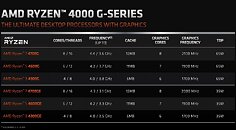
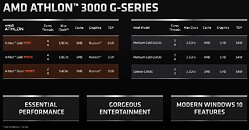
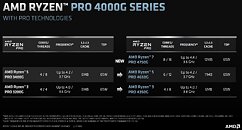
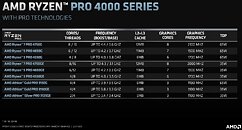
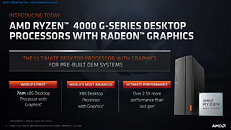
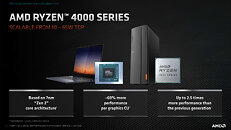
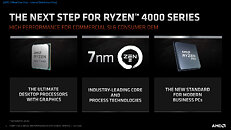
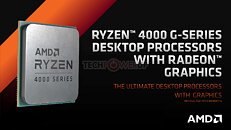
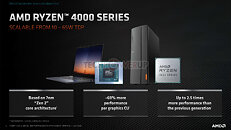
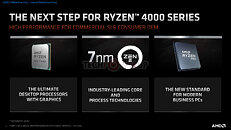
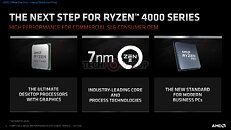
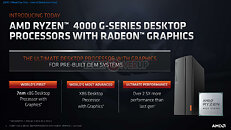
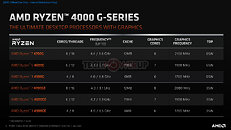
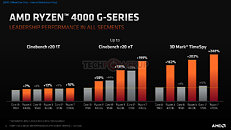
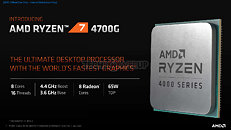
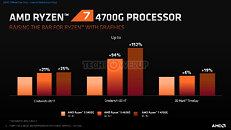
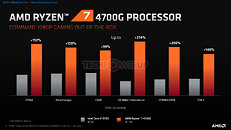
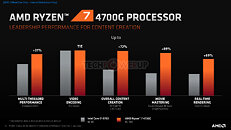
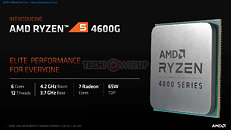
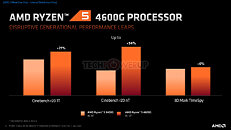
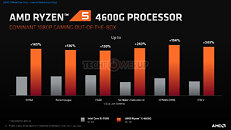
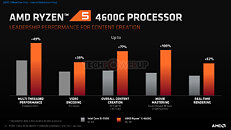
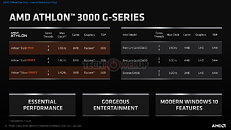
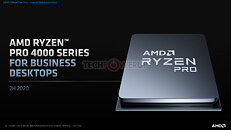

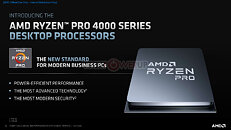
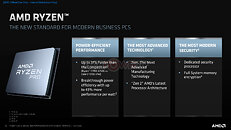
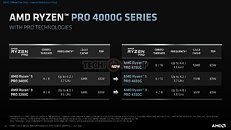
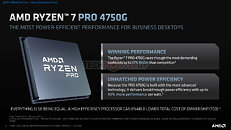
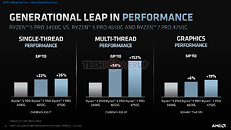

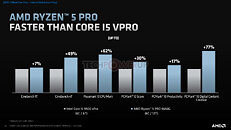
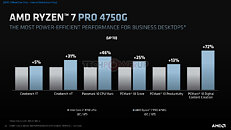
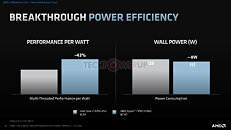
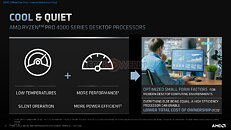


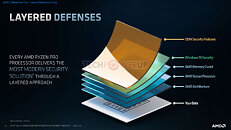
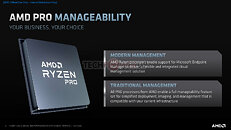
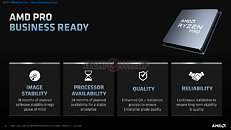
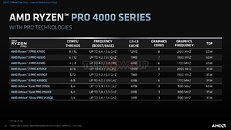

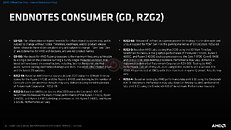
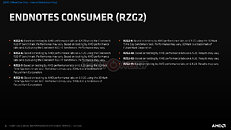


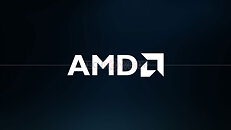

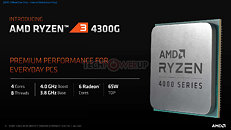
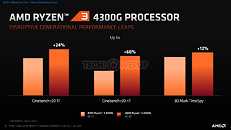
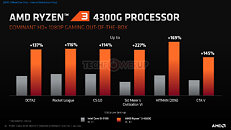
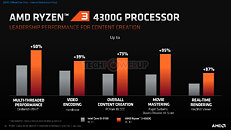

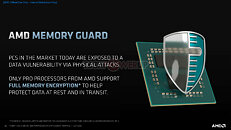

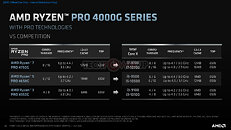
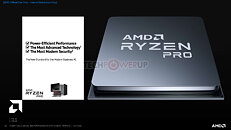

59 Comments on AMD Announces Renoir for Desktop: Ryzen 4000G, PRO 4000G, and Athlon PRO 3000G
Hopefully we'll see that again from Intel in a few more years possibly or just a more continued back and fourth level of competition between them. I don't mind seeing AMD gaining a better foothold though against Intel/Nvidia off the success it's having on the CPU side that'll be a positive thing going forward for consumers they were put into a corner confined for nearly a decade after that merger due to financial overhead of the merger and Bulldozer fiasco. AMD returning full force on the CPU is great overall for the company and it's finally allow it to leverage it's ATI merger assets more convincingly overall as debt is paid down and R&D budget expands plus they are learning how to integrate together better as a whole from a company standpoint more seamlessly that required a bit of leadership that knew what it was really doing and understand the tough decisions that need to be made in regard to what receives more emphasis on development on both the CPU and GPU side of things and what's the best compromise to push performance ahead further.
I expect B550 boards will have what are basically HDMI 2.0 ports while VRR, ALLM and maybe eARC could be added. Do any of the boards out now have these features? TBH I don't game much any longer, no need for gaming-specific features, but I did want to hook up a 120Hz TV. Would have loved full-fat HDMI 2.1 and desktop Renoir to have AV1 (decode). Can't wait for it though.
This is still far superior to 2.0, simply due to the standardization and universal compatibility. While VRR and other features could be implemented on 2.0, there was no real interoperability as it was all based on (quasi-)proprietary extensions to the standard. AMD had FreeSync over HDMI which unlike DP-based FreeSync was AMD only (and only existed on a limited number of monitors, no TVs), and LG and Nvidia implemented a form of VRR exclusive only to the two of them. Even with reduced bandwidth 2.1, you have a guarantee that VRR and other advanced features will work with any 2.1 sink (monitor, TV) as long as it matches the feature level (i.e. you can't expect 120Hz support from a 60Hz TV). Pretty much any 2.1 TV will support eARC (support for this is only down to the signal sink, so motherboards don't need any support for eARC beyond supporting audio output).